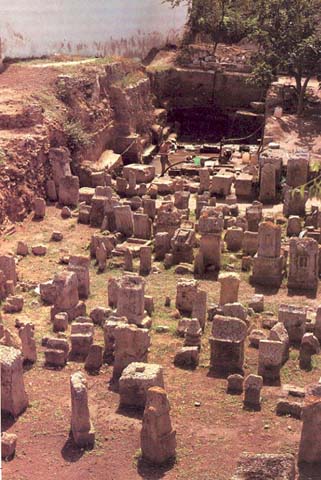Image Details

ASOR Punic Project/Gary Pratico
The Tophet, the sacred precinct of Carthage. Here, from the eighth century B.C. until the second century B.C., mothers and fathers of Carthage buried the bones of their children sacrificed to the god Ba‘al Hammon and to the goddess Tanit. By the fourth century B.C. the Tophet may have been as large as 64,800 square feet (6,000 square meters), with nine levels of burials. Archaeologists today group these levels into three periods designated Tanit I, II and III.
In the foreground, grass grows around sandstone and limestone burial monuments dating from 600 B.C. to 300 B.C. (Tanit II) that were left in place by the Kelsey excavations of 1925. In the background, a member of the ASOR excavation team works to uncover Tanit II levels buried under debris from later Roman and Byzantine occupations. The authors and their team eventually excavated this entire area of the Tophet.
